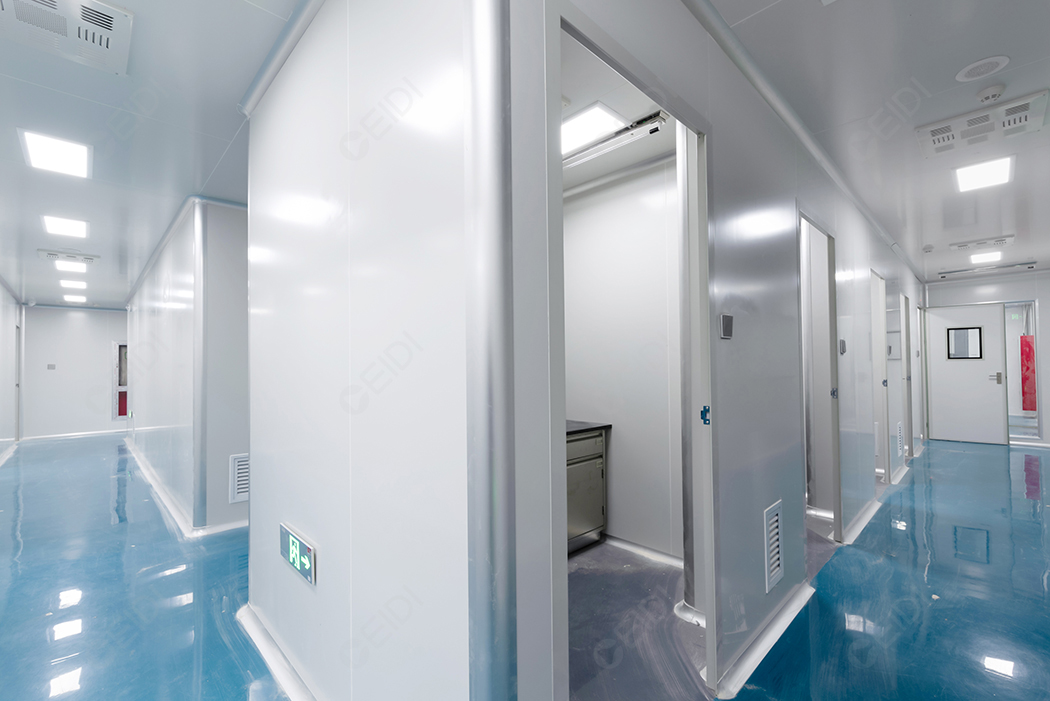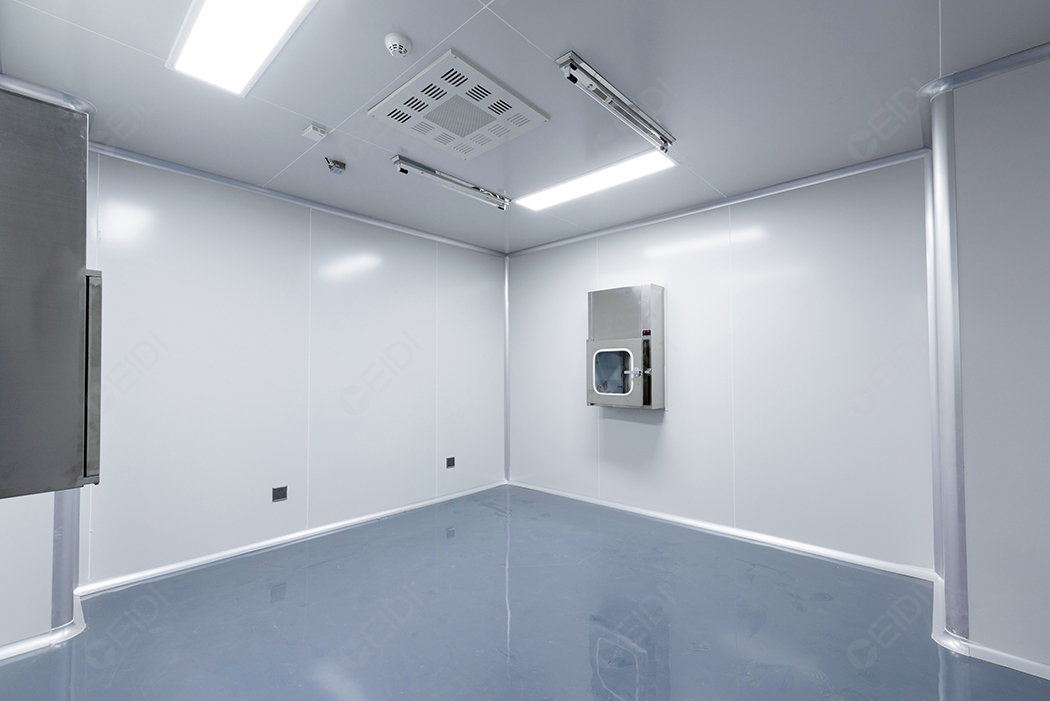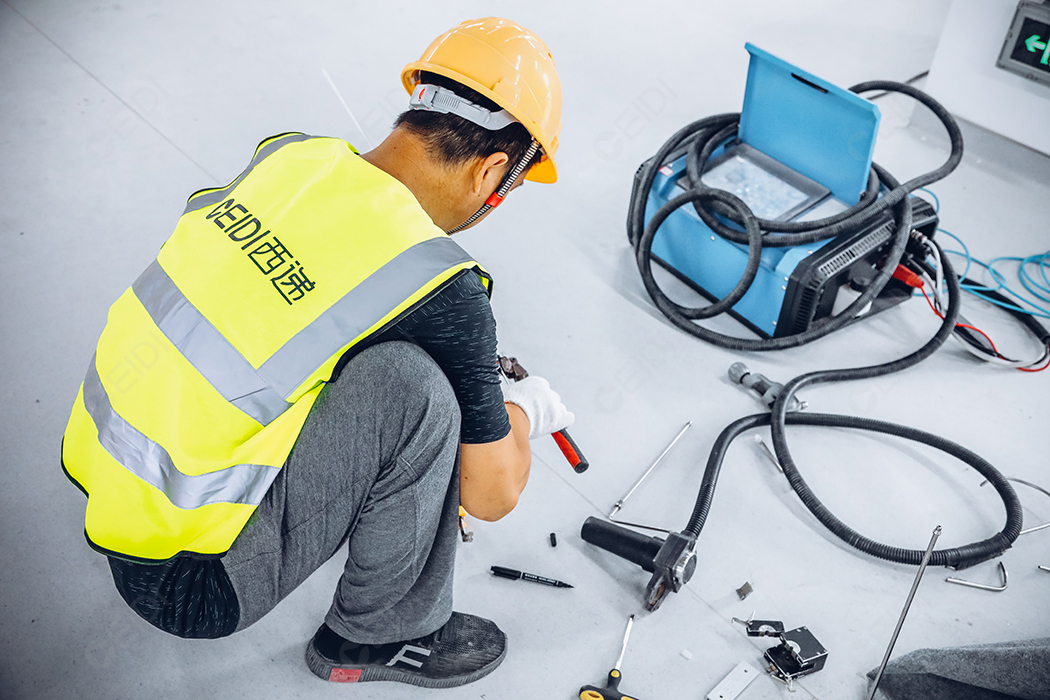Welcome to the official website of Xidi laboratory, the laboratory design and decoration recognize Xidi!
|
|
Home >> News >> Technology
文章出处:Technology|阅读量:823|发表时间:2021-02-25
Affected by the new crown virus, in order to improve the requirements of medical institutions' new crown pneumonia prevention and treatment capabilities, consolidate the results of epidemic prevention and control, and accelerate the improvement of new crown virus nucleic acid testing capabilities, major hospitals and institutions across the country are adding new PCR laboratories. As an excellent integrated service provider CEIDI Xidi in the field of clean engineering such as laboratories and clean rooms, the amount of inquiries about this kind is also increasing, so this article is a popular science article about PCR laboratories. The PCR laboratory is the gene amplification laboratory. How to plan the zoning of the PCR laboratory? What are the key points of the construction and design of the PCR laboratory? Does the PCR laboratory have to be a one-way corridor? Are corridors and transfer windows standard? Shanghai CEIDI Xidi will answer for you.

I. Key points of PCR laboratory construction and design
1. The PCR laboratory can be in a dispersed form or a combined form. To complete a set of PCR experiments, the four experimental processes of reagent preparation, sample processing, nucleic acid amplification and product analysis should usually be carried out. If the experimental process requires, the sample crushing process should be added.
①Decentralized PCR laboratory:
The so-called decentralized PCR laboratory means that the experimental rooms that complete the above-mentioned experimental process are far away from each other and are arranged in a dispersed manner. For the construction and design of the PCR laboratory in this layout, because each experiment is not easy to interfere with each other, no special conditions are required.
②Combined form PCR laboratory:
The so-called combined PCR laboratory refers to the form in which the experimental rooms that complete the four PCR experiments are arranged adjacent to each other to form an independent experimental area. For the construction design of the combined PCR laboratory, due to the centralized arrangement of the various experiments, it is easy to cause mutual interference. Therefore, there are certain requirements for the overall layout and barrier system. Each room has a buffer room at the entrance to reduce the exchange of indoor and outdoor air.
2. CEIDI PCR laboratory design and decoration experience supplement
①The reagent preparation room and sample processing room should be slightly positive pressure to prevent the air containing nucleic acid aerosol from entering and causing pollution; the positive pressure effect can be achieved by controlling the inlet air volume to be greater than the exhaust air volume.
②The nucleic acid amplification room and the product analysis room should have slight negative pressure to prevent the aerosol containing nucleic acid from spreading out and contaminating reagents and samples. The negative pressure effect can be achieved by controlling the exhaust air volume to be greater than the intake air volume.
③Under ideal conditions, positive pressure can be set in the buffer room of PCR laboratory so that indoor air does not flow to the outside and outdoor air does not flow to the room. The air intake of the PCR laboratory is controlled by the original central air conditioner. The air outlet of the central air conditioner is required to be installed at a designated point and the height is 2600mm after the floor is paved.
④ If a fluorescent PCR machine is used, the amplification room and the product analysis room can be combined. If the room depth allows, a dedicated corridor inside PCR can be set up. It should be pointed out that in reducing the exchange of indoor and outdoor air, buffer rooms are more meaningful than dedicated corridors.
3. There should be a one-way experimental process flow, logistics, human flow and air flow between each area to form a protective barrier for the one-way process to avoid mutual interference between experiments and prevent nucleic acid aerosols from polluting the experimental process and producing false results .
4. The walls of the laboratory, including the ceiling, should have a firm structure and good air-tightness; all internal corners should adopt arc-shaped transitions; the walls should be smooth, non-absorbent, corrosion-resistant, easy to clean and disinfect; floor materials should meet No gaps, no leakage, smooth, and corrosion resistance requirements.
II. Is the design and decoration of PCR laboratory a one-way corridor? Are corridors and passing windows standard?
PCR laboratory decoration design is a professional design and decoration project. CEIDI Xidi found that many companies like to set up PCR corridors when designing, but PCR corridors are not standard for laboratory decoration design, especially in construction. Don't make PCR corridors when the depth is not enough. (Does the PCR laboratory decoration have to be a one-way corridor?) And the PCR corridor will increase cross-contamination.
The essence of the transfer window is the same as the buffer room, which is the buffer room for logistics. It is not necessary to set a transfer window, but generally experimental institutions and experimenters like to set a transfer window for ease of operation. In fact, as long as it does not involve clean and dirty diversion, there is no need to set a transfer window.

III. Functional division of PCR laboratory
1. The design of PCR laboratory usually has four partitions: reagent storage and preparation area, specimen preparation area, accounting amplification area, and product analysis area. These four partitions do not need to be connected together, and must be completely independent in physical space. Whether in space or in use, each area should be in a completely separated state without direct air communication.
2. Functional area distribution of PCR laboratory:
①The housing partitions of PCR can be distributed or centralized; the distribution principle of centralized layout is sequential arrangement and independent partition; the 4 basic partitions can be increased/decreased as needed. The following is the common layout of PCR laboratory functional partition
② In buildings, buffer rooms are the primary measure to block air exchange
③ Entering the working area should strictly follow a single direction, namely: reagent storage and preparation area-specimen preparation area-accounting and amplification area-product analysis area
3. Pressure control of PCR laboratory functional area:
① The pressure gradient is preferably 10Pa and above
②Two control methods: system control and exhaust power change. The system control means that the pressure control of the 4 rooms should be started and stopped at the same time; the exhaust air control means that the exhaust pipe should be branched, otherwise the air flow will flow back and cause pollution when the laboratory is out of service.
IV, the main equipment of the PCR laboratory
①Reagent preparation area: Instruments and equipment mainly include refrigerators, ultra-clean tables, samplers, mixers, balances and centrifuges, etc. In addition to dedicated samplers and balances, they should also be calibrated regularly. Reagent sub-packaging should be carried out in an ultra-clean bench, and the amplification reaction mixture should be of molecular biology grade. After the reagents are prepared, there should be quality inspection: one is whether there is contamination, and the other is to detect the amplification effect of the reagent. The following is the reagent preparation and storage area of the PCR laboratory:
②Specimen preparation area: The main equipment includes biological safety cabinets, samplers, centrifuges, incubators, and mixers. The following is the specimen preparation area of the PCR laboratory
③Amplification area: The main instruments are nucleic acid amplifier, ultra-clean table, micro-sampler, centrifuge, and movable UV lamp. The thermal cycler needs to be calibrated. And equipped with UPS power supply to prevent the impact of power outage on the amplification effect due to voltage fluctuations. The following is the PCR laboratory amplification reaction mixture preparation and amplification area:
④Analysis area: The main instruments and equipment include microplate reader, plate washer, sampler and water bath, etc. The area of the buffer room in the clean experimental area cannot exceed one-eighth of the main laboratory, which is regulated.
V. Ventilation system, pressure control, pollution prevention, installation conditions of PCR laboratory decoration project
1. Laboratory air conditioning and ventilation system design and pressure control:
The PCR laboratory does not have strict purification requirements, but in order to avoid the possibility of cross-contamination between various experimental areas, it is advisable to adopt a full delivery and full exhaust air organization form. At the same time, the ratio of air supply and exhaust must be strictly controlled to ensure the pressure requirements of each experimental area.
2. Pollution prevention and control:
The core issue of PCR laboratory design is how to avoid contamination. In actual work, the following types of pollution are common: contamination of amplified products; contamination of natural genomic DNA; contamination of reagents and contamination between specimens. Because once pollution occurs, the experiment must be stopped until the source of the pollution is found, and the result of the experiment must be invalidated and the experiment must be repeated. Therefore, it is time-consuming and cumbersome to find the source of pollution around the laboratory after pollution occurs, and waste manpower and material resources. Therefore, to avoid pollution, the first priority should be prevention, not elimination.
3. Strictly follow the standardized and scientifically designed installation process:
Before installation, you need to determine the following installation conditions, such as: power supply voltage, power inlet location, telephone network cable inlet location, water inlet pressure, minimum installation space, ground flatness, vents, inlet pipes and downpipe positions, etc. Ideal space size and vent size.
VI. Management after renovation and construction of PCR laboratory
1. Strictly control personnel entering and leaving the laboratory. Personnel who have nothing to do with the experiment are not allowed to enter and leave the laboratory at will, and independent passages and doors for entering and leaving the entire experimental area shall be set if conditions permit;
2. Minimize unnecessary walking in the experimental area to reduce the possibility of cross-contamination.
3. The amplification product analysis area is the main source of amplification product contamination. Waste liquid cannot be dumped in the laboratory. It must be soaked and disinfected in a disinfectant and discarded away from the laboratory. Used tips and other disposable materials It should also be treated uniformly after soaking and disinfecting with disinfectant, such as incineration;
4. The amplification product analysis area may use some genetic mutations and toxic substances, so special attention should be paid to the safety protection of experimental personnel.
5. Complete laboratory supporting facilities are necessary to ensure experimental work. Corresponding equipment and instruments, such as ultra-clean workbenches, centrifuges, samplers, etc., should be equipped according to the different experimental contents of each laboratory.